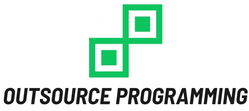Outsourcing has become a popular strategy in the healthcare sector, particularly within Health IT projects. As hospitals and clinics aim to enhance efficiency and cut costs, many are turning to external partners for specialized technical expertise. However, this approach comes with its own set of challenges. One of the most pressing issues is maintaining compliance with health regulations and standards.
Navigating the complex landscape of health information technology requires more than just technological skills; it demands an unwavering commitment to compliance. When outsourcing tasks such as data management or software development, organizations must ensure that patient privacy remains protected and that all activities adhere to industry regulations like HIPAA.
Importance of Compliance in Outsourced Projects
Compliance in outsourced projects is crucial for several reasons. First and foremost, it ensures that sensitive patient data remains protected. With strict regulations like HIPAA, any breach can lead to severe penalties.
Moreover, compliance fosters trust between healthcare providers and their third-party vendors. When both parties adhere to established standards, it builds a solid foundation of reliability and accountability.
Additionally, maintaining compliance helps organizations avoid legal complications. Non-compliance can result in lawsuits or financial losses that may tarnish a company’s reputation.
Staying compliant means keeping up with industry best practices. This not only enhances operational efficiency but also positions the organization as a leader in health IT solutions.
Common Compliance Issues in Outsourced Health IT Projects
Outsourced health IT projects often face several compliance challenges. One significant issue is the handling of sensitive patient data. Organizations must ensure that third-party vendors adhere to strict regulations, such as HIPAA in the United States.
Another common concern is the lack of standardization in security protocols. Different vendors may have varying levels of security measures, which can create vulnerabilities for healthcare organizations.
Communication gaps can lead to misunderstandings about compliance requirements. If both parties aren’t on the same page regarding expectations and guidelines, compliance risks increase significantly.
Regular audits are sometimes overlooked as well. Without consistent evaluations of vendor performance and adherence to regulations, it’s easy for non-compliance issues to slip through the cracks.
Changes in legislation or industry standards can pose a challenge too. Keeping up-to-date with these changes requires proactive management from both healthcare providers and their outsourcing partners.
Strategies for Maintaining Compliance
Establishing clear guidelines at the start of any outsourced health IT project is crucial. Define compliance requirements that align with industry standards and regulations, such as HIPAA.
Regular training sessions can keep all team members informed about necessary protocols. This ensures everyone understands their role in maintaining compliance.
Conduct periodic audits to assess adherence to these guidelines. Spot checks help identify potential issues before they escalate.
Utilize technology tools for tracking compliance metrics. Automated systems can simplify monitoring processes, making it easier to stay on target.
Engaging legal experts familiar with health IT regulations provides additional layers of protection. Their insights are invaluable when navigating complex laws.
Create a feedback loop between internal teams and external partners. Open communication fosters an environment where compliance becomes a shared responsibility among all parties involved.
Communication and Transparency Between Parties
Effective communication lays the foundation for successful outsourcing in health IT. It fosters trust and ensures that all parties are on the same page. Regular updates, feedback sessions, and open dialogue can help bridge any gaps.
Transparency is equally vital. When both sides share information freely, it minimizes misunderstandings and keeps everyone aligned with project goals. Clear documentation of processes and expectations should be established from the start.
Setting up structured channels for communication enhances collaboration. This could involve weekly check-ins or shared platforms for document management. The more accessible information is, the smoother operations will run.
Encouraging a culture of honesty nurtures problem-solving skills as well. Teams that feel comfortable addressing challenges are more likely to innovate solutions promptly without fear of repercussions or blame.
Benefits of Maintaining Compliance in Outsourced Health IT Projects
Maintaining compliance in outsourced health IT projects brings numerous advantages. First and foremost, it safeguards sensitive patient data. With stringent regulations like HIPAA in place, ensuring compliance protects both the organization and its clients from potential breaches.
Adhering to compliance standards fosters trust between healthcare providers and third-party vendors. Establishing a transparent relationship allows for better collaboration and smoother workflows. When all parties understand their obligations, project success becomes more attainable.
Compliant practices can lead to improved operational efficiency. By following established guidelines, organizations reduce the risk of costly fines or legal issues that arise from non-compliance. This proactive approach ultimately saves time and resources.
Maintaining compliance enhances organizational reputation within the industry. A solid track record builds credibility with stakeholders while attracting new clients who prioritize data security.
By prioritizing compliance in outsourced health IT projects, organizations not only protect themselves but also pave the way for successful partnerships built on trust and mutual respect.


Leave A Comment Cancel reply